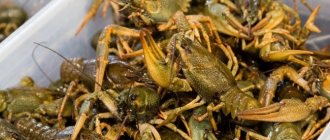In nature, all living things are found in the food chain. Beans with their nutritional properties are no exception. Where it is grown, specific insects and bean grains live. When infected in the habitat, with grains, these insects spread, getting to places where beans do not grow, but there are a lot of them as a result of storage.
Therefore, all warehouse premises are treated with insecticides on a schedule in order to destroy not only the weevil, but also other insects in the warehouse. The question of how to store beans for winter consumption is largely related to preserving them from bruchus, the bean grain.
Preparing for storage of legumes from a summer cottage
Before storing beans collected from a summer cottage, they must be dried: spread in an even layer on a large sheet of paper (not newspaper) or clean cloth and placed in the sun or a shaded place. The main condition is good air circulation.
Before distributing the product into jars, it must be calcined in the oven at a temperature of 60°C. This will help get rid of larvae or eggs of harmful insects (if any). After this, the viability of the fruits will be lost, but their taste and nutritional value will not change. Only those beans that are intended for food should be processed.
If the grains are needed for planting next year, then you need to place them in the freezer for 3 hours. The weevil larvae will die at a temperature of -10°C, and the planted seeds will produce a good harvest next season.
The shelf life of grains will increase if you follow the following recommendations:
- containers must be tightly closed;
- storage areas are not subject to heat;
- humidity not higher than 50%.
Freezing green beans
A good option for storing green beans for the winter is freezing. For this purpose, only young shoots are taken. They should have a soft green or light green color. To fully ensure that they are suitable for freezing, run your fingernail along the pod, there should be a cut. If it is difficult to make, you should not freeze it.
Freezing green beans
Before freezing, young shoots should be washed with cold boiled water, the ends trimmed and cut into pieces of 3-4 cm. Then they need to be dried and placed on a freezer tray, previously covered with a clean towel. It is worth leaving a small distance between the pieces so that they do not freeze. Next, you should turn on the super freeze, and after freezing, place it in bags or resealable containers. If there is no such function as super freezing in the refrigerator, do not despair, you can freeze it in a regular freezer. The only thing is that it will take a little more time.
Another way to store green beans for the winter is to blanch them. This method is suitable for those who are afraid that the beans will spoil in the refrigerator and become covered with germs. This option is also suitable for aged pods.
For this method, the pods should also be washed and their ends trimmed. In this case, they are cut at their discretion. Next, boil the water and remove it from the heat. Place the beans in this pan for a couple of minutes. If you are afraid for its safety in the future, you can boil it. After this, the pods are taken out of the pan and placed in chilled boiled water with the addition of ice. The latter must also be prepared from heat-treated water. The pods should be left in the liquid for 10 minutes. After this time, the beans are dried and packed in bags and containers. Storing in bags is convenient because they can be stacked one after the other.
What and where to store
It is preferable to store beans:
- in specially sewn canvas bags;
- paper bags;
- cardboard boxes;
- glass container. However, you should only place grains in jars that you do not intend to plant next year.
It is not recommended to store them in plastic bags, as they quickly deteriorate. Legumes in canvas bags should be kept in a dark, dry, cool place. This could be a basement, closet or storage room. Grains in hermetically sealed jars can be stored in a kitchen cabinet at room temperature. But you need to remember that they should be kept away from heat sources.
The optimal temperature at which beans are stored is 5-10°C. If the air humidity does not exceed 50%, then the fruits will retain their original taste properties throughout the entire shelf life.
Tips for storing cereals
Each cereal will be stored in a separate container, which must be thoroughly washed, sterilized and dried. The slightest drop of water will ruin the entire jar or container. Before closing the jar with a lid, cover the neck with paper, and then rotate the lid
As a precaution, place bags filled with salt next to the containers.
If bugs have already taken up residence in your cabinet, place lavender and chestnuts on the shelves.
As for air humidity, it should not be more than 70%. A sudden increase in temperature can cause food spoilage. +15-18C is the optimal storage temperature.
How to prevent bugs from appearing
Before putting the beans in a hermetically sealed container or canvas bag, you need to sort them out and get rid of any rotten ones, those damaged by fungus or pests.
If you decide to store the harvest in a canvas bag, then it is better to soak it in a saline solution for some time beforehand, and then dry it without rinsing. This impregnation will protect the fruits from bugs.
To prevent harmful insects from appearing in containers, supplies should only be placed in dry containers. The main pest is the weevil. How else can you prevent the appearance of this insect that is dangerous to the crop:
- The grain does not tolerate strong odors, so place a sprig of dill or a clove of garlic in a container with legumes.
- The pest also cannot tolerate the smell of printing ink. Before placing the fruits in the container, put newspaper in there.
- Add a couple of rosemary sprigs to the container. This is the best way to combat weevil.
- To protect supplies from harmful insects, beans should be kept separate from other legumes or cereals. Especially if there are already some bugs in the supply cupboard. Pests of cereals and peas love beans.
In order to preserve a large harvest of legumes well at home, a small amount of ash is also poured into the bottom of pre-sterilized dry jars. It prevents the appearance of fungus and mold and repels bugs. Before using supplies for food, they must be washed thoroughly.
Bugs cannot tolerate cold, so place containers with legumes in a cool place. However, remember that if beans are kept in the refrigerator for a long time, they lose their beneficial properties.
We choose containers and premises, create optimal conditions
Dry beans are stored in an airtight container. For such purposes use:
- glass jar;
- plastic bag;
- Plastic container.
Insects and bugs should not get inside in any way. Beans are best stored in a dark and cool place. If there are concerns that the grain may reach the crop, then it is better to store it in the cold. The beans tolerate low temperatures well without losing their taste, but the bean larvae die. Before the onset of stable cold weather, you can place the grains in the freezer, and then simply take them out to the balcony.
In a humid and warm room, grains begin to germinate quickly, so do not keep them warm. The sprouts are not suitable for consumption and are used only for planting in the spring. If you plan to store beans in a canvas bag, you must first dip it in a saline solution and dry it. This procedure will protect the crop from both grain and other pests.
Dry beans: shelf life
Most often, harmful insects are found in stocks that have expired. Before placing the fruit in the container, attach a label to it with the date of packaging.
The average shelf life of beans is two years. You can store beans longer only for planting. Starting from the third year, bean grains gradually lose vitamins and other beneficial substances. This is caused by their drying out. At the same time, the germination of seeds decreases, but since they are soaked before planting, you can always discard ungerminated seeds.
If the beans, after lying in the container for more than two years, have changed shape or color, then they cannot be eaten. A change in color from white or red to gray or the appearance of spots on them indicates that they are affected by a fungus. This usually happens in the third or fourth year of storage of the product, especially in a humid area.
How to save the bean harvest from weevil - prevention and control measures?
Let's look at pest control methods and preventative measures.
| Purpose of the events | Execution Rules |
| Preventive measures against weevil | Fumigation of seeds and treatment before sowing. On the day of sowing, treat with rhizotorphin (bean) and micronutrients. |
| Housewives' tricks for preserving the harvest. | Maintaining a cool temperature (no more than 8ºC). A balcony, a vegetable section of a refrigerator, or an unheated utility room are suitable. Separation of affected and healthy seeds. The crop is immersed in a saline solution of one bucket of water and 3 kg of table salt. Spoiled fruits float to the surface, they are separated, the rest are washed and dried. |
About product quality
To determine quality, you should pay attention to the shelf life. If it comes to an end, then these reserves cannot be kept for long. Quality beans:
- smooth, rough, without dents;
- bright uniform color, without gray inclusions and spots;
- without small pits on the surface;
- all fruits are the same size.
If the beans smell unpleasantly damp or moldy, they have gone bad. If condensation is noticed in the bags, and there are droplets of moisture on the grains, then you need to remove them from the container and dry them.
In order to avoid problems caused by bugs, it is necessary to comply with storage conditions, and also check the cupboard with cereals and beans from time to time. If you detect the slightest signs of insect pests, take measures against their spread and throw away affected stocks.
Additional tips and tricks
Beans can be stored using different methods. This can be done in glass containers, refrigerator, freezer. The beans can be canned or kept at room temperature. Regardless of the chosen method, you should follow certain recommendations:
Before storing beans, be sure to dry them. To do this, place the grain on a baking sheet and take it out to the balcony
It is important that the beans are exposed to direct sunlight. At night, beans should be placed in drawers or boxes.
The manipulation should be repeated in the morning. You can use another method to dry beans. To do this, it is recommended to collect it in brooms and hang it in a well-ventilated place. For storage, it is recommended to select only fully ripened beans. Its pods should be dry and the doors should be slightly open. The beans themselves should have a firm consistency. Before storing legumes, you should definitely sort them out. It is recommended to remove all damaged grains. Otherwise, there is a risk of infection of the entire crop.
Storing beans is a complex and responsible process. To keep the beans fresh for as long as possible, the necessary preparatory procedures should be carried out.
Strict adherence to humidity and temperature parameters is of no small importance.
Share link:
Storing leguminous species
Green beans or green beans are very popular. In the refrigerator it deteriorates within 2-3 days after purchase.
In order to keep green beans fresh, they must be placed in the freezer. This way it can be stored for up to 6 months.
To freeze green beans, follow these guidelines:
- Wash the recently picked pods under running water, then get rid of the stalks and damaged areas, and chop the very long ones into pieces.
- Blanch the pods: Place them in boiling water for 3-4 minutes, then place them in ice water. This will preserve all their nutritional properties.
- Let the water drain. To do this, spread the pods on a paper towel. If this is not done, then an ice crust will appear on the grains after freezing, and the product will lose its aroma.
- Place the dried pods in plastic bags or airtight containers. It is recommended to lay out portions so that each piece can be used at one time, since re-freezing is undesirable. Tie the bags tightly and place them in the freezer.
In order to properly store beans at home, it is necessary to carry out steps to prepare the harvest (dry, heat-treat). It is important to observe the temperature regime, choose and prepare the container correctly. Dry beans require especially careful attention. Don’t forget about this storage method as canning. Canned beans are used to prepare various tasty and healthy dishes.
How to store beans for the winter?
Storing beans and green pods is initially different. Green beans can be preserved using all known methods, frozen, and thus they are stored with maximum benefit during the winter. But to preserve grain beans, other conditions must be created. Considering that beans are a very healthy product that replaces meat in its composition, it is easy to spoil supplies without following storage rules.
The herbal product should be protected:
- from improper drying and laying of wet grain;
- from storage in conditions of high humidity;
- non-compliance with temperature conditions.
When beans are stored, even correctly, their nutritional value decreases over time, and the cooking time increases.
Of all the bugs that pest grain and legume seeds on beans, the most common is the bean weevil or bruchus. These insects are quarantine pests. They live in a narrow range where beans have long been cultivated. They arrive with seed material and gradually multiply. Therefore, the task of the quarantine service is to prevent the spread of the beetle to new territories.
Recently, we stopped this insect from reaching the Far East on a Chinese ship carrying beans from India. The insect and its live clutches were found on the ship in food beans. Security measures have been taken. Bruchus often comes from the fields of Transcaucasia, they have their own species. Therefore, in home plots, each bean should be examined before planting and the seeds with holes in the bean should be destroyed by burning. This pest came to Russia at the beginning of the last century, at the height of the Civil War, when there was no quarantine service. So far no grains have been observed in black beans.
How to preserve beans so that bugs do not infest you can be understood by knowing the biology of the beetle. The weevil actively reproduces in summer and winter in heated rooms, giving 5-6 generations. In nature, eggs are laid in ripening beans, up to 30 eggs each. But the masonry is extended over time. Oviposition is found on the valves of the pod or on an unripe bean in a crack or gnawed hole. The larvae will develop in 10-11 days and invade the beans. After 21 days, the caterpillar turns into a pupa and after 10 days an adult insect is obtained.
At cold temperatures of 0-10, the death of larvae and pupae occurs within a month, at -12 0 within a day. So the cold storage method can protect food supplies from destruction. The beetle in the southern regions is not destroyed during mild winters and can colonize storage facilities during warm times. They colonize crops and manage to produce 4-5 generations. Damaged beans lose their viability. In colonized seeds, black dots of passages and excrement are visible through the shells.
The initial drying of the grain before loading is of great importance. In good weather, the beans pulled out from the garden should lie in the sun for a few more days before opening the doors or, collected in brooms, hang in a draft on racks. For food purposes, beans are threshed and prepared for storage in winter.
Mistakes summer residents make when collecting and storing beans
Untimely and poor-quality harvesting. They skip the morning hours when the fruits are juicy. They pick the pods by hand, which leads to their breakage. It is safer to cut with scissors, holding the pod with your hand.
Do not maintain tightness when storing fruits in glass containers. This leads to damage to the beans by pests and loss of the harvested crop.
They do not prepare the soil before sowing. Planting on ridges for the first time requires enrichment with nodule bacteria. It is enough to add soil to the ridges from the places where beans used to grow or add special bacterial preparations.
Bean bushes are not left to obtain seeds. Separately grown seed plants provide high-quality material and do not reduce crop productivity.











